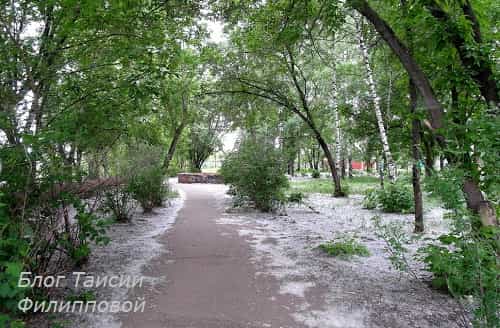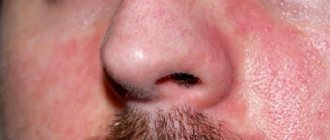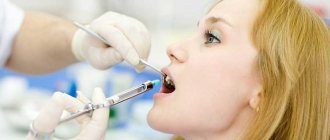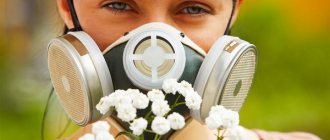Symptoms
The nature of the allergic reaction to poplar fluff differs from person to person, depending on the amount of allergen, the state of the immune system, and predisposition.
The most common signs of an allergy to poplar fluff are as follows:
- allergic rhinitis: “serial” sneezing when the patient tries to get rid of fluff packed into the nose and mouth, stuffy red nose (especially the wings), headache, runny nose like runny nose, discomfort, itching in the nasopharynx,
- allergic conjunctivitis: redness of the whites of the eyes and eyelids, tearing, burning sensation, itching in the eyes,
- allergic cough.
By irritating the respiratory tract, fluff contributes to the exacerbation of bronchial asthma.
Skin reactions are associated with mechanical irritation and sweating. The fluff with all the particles stuck to it sticks to the skin, it begins to itch, turns red, and signs of urticaria, atopic dermatitis, and eczema appear.
The following signs of a fluff allergy may occur: pain in the eyes, discomfort from the sun, suffocation, fatigue, and a feeling of weakness. In particularly difficult cases, swelling occurs, as well as disturbances in the gastrointestinal tract.
An allergy to poplar fluff is most often accompanied by the following symptoms:
- frequent sneezing, rhinitis;
- redness of the eyelids, lacrimation and pain in the eyes;
- possible difficulty breathing, accompanied by suffocation;
- a hyperemic rash may appear on the skin, which can be local or spread throughout the body;
- as a rule, the rash is accompanied by unbearable itching;
- from the central nervous system: increased drowsiness, lethargy and fatigue. Sometimes dizziness and migraine-like headache are possible;
- with severe allergies, angioedema and anaphylactic shock are possible. In this case, the symptoms increase rapidly and there is a direct threat to the patient’s life. Therefore, despite the first aid provided, it is recommended to immediately call a medical team.
It should be remembered that allergic symptoms to poplar blossoms are most aggravated in windy and hot weather. With any development of the disease, it is necessary to carry out timely therapy. This will help avoid possible complications.
How to distinguish from ARVI
This won't be difficult to do.
If every spring you experience the same symptoms, but the temperature does not rise, the cervical lymph nodes do not enlarge, there is no severe inflammation in the throat, and the discharge from the nose has a liquid consistency, this indicates an allergic disease.
In addition, this disease is indicated by paroxysmal sneezing and the presence of these symptoms for more than 10 days.
At the same time, many doctors have ambivalent views on the issue of fever during allergic reactions.
In most cases it is believed that it should remain normal.
However, there are situations when, at the height of sensitization, the temperature rises slightly, so this symptom cannot be treated unambiguously.
With insect bites or acute food allergies, the temperature increases quite often. If we are talking about hay fever, this indicator usually remains within the normal range.
Useful properties of poplar
Allergy sufferers are scared to even think about poplar fluff. The poplar itself is not a harmful tree, and even beneficial for humans. This is an extremely hardy tree. In Soviet times, city streets were planted with poplars. The tree is considered unpretentious and grows quickly. Poplar alleys decorate the streets and provide shade on a hot day.
But his most important advantage is that he is considered an air wiper. The tree effectively retains dust and releases 7 times more oxygen than spruce or pine. It was calculated that during the year the tree releases 44 liters of oxygen, while the spruce releases only 6 liters. Poplar foliage muffles sound waves and humidifies the air 10 times more than spruce.
Poplar saturates the air with a large amount of phytoncides and aromatic oils. Sticky poplar leaves and leaves have medicinal properties:
- anti-inflammatory,
- antipyretic,
- expectorant
- diuretic,
- antirheumatic.
In fact, the poplar itself, or rather its seeds, are not an allergen. Poplar seeds are covered with silky hairs that collect pine pollen. It is this that is a powerful allergen.
And poplar fluff itself is harmless. No allergens were found in it. But it carries pollen from other flowering plants, sometimes located several kilometers away. It is the allergies of these flowering plants that cause an allergic reaction. This can be pollen from birch, spruce, pine and meadow grasses that bloom at the same time. An allergic reaction is unpredictable and can occur at any time of the year, at any age and regardless of where you live.
Although not an allergen, poplar fluff still causes inconvenience. Sometimes poplar “snowfall” is so strong that even healthy people endure it quite hard. With abundant flowering, carried by the wind, it is a strong irritant to the mucous membranes of the nose and eyes.
- Create a comfortable environment for yourself at home or at work
In the spring, after a long winter, of course, everyone strives to ventilate the premises more often, open balconies and windows, letting a huge number of allergens into the apartments. To reduce their effect on the body, you can use air purifiers with HEPA filters in apartments and offices; they are quite expensive, but according to reviews from many allergy sufferers, they significantly reduce allergic manifestations.
Dry air greatly intensifies allergy symptoms, so in windy, dry weather you should reduce your time outside and use air humidifiers indoors, which are abundant on the household appliances market today. When dry spring air is artificially humidified, pollen settles on objects and floors much faster than with dry air, which cleans it of allergens. For this reason, you should also wash the floors in the room as often as possible during the flowering of plants allegorical to you.
Doctors recommend that during the flowering period of trees, when you come home from the street, take a shower, wash off pollen from your hair, face, hands, and rinse your nasopharynx. The Dolphin device has proven itself very well - a simple device that is very convenient for rinsing the nasal passages, and the solution can be prepared at home, 0.5 teaspoon of salt and the same amount of soda per 1 glass of water.
The ideal option is to go on a trip at this time of year to places where there are no poplars, oaks, hazels and other sources of allergies, to the north or to the mountains. Even the Black Sea coast, closer to Sochi and Abkhazia due to higher humidity and subtropical climate, reduces the likelihood of allergies.
- Make sure it's an allergy by getting tested
If you notice that symptoms similar to allergic rhinitis, cough, conjunctivitis occur in you from March to mid-May, this is not an allergy to poplar fluff, but to other flowering plants, which can be determined using a blood test for specific allergens. You should contact an allergist who will conduct an appropriate examination and help alleviate this ailment.
Diagnostics
Diagnostic measures, examinations and prescription of treatment regimens are carried out only by an allergist. You should contact him when the first symptoms of a problem occur, when the condition has worsened, but there is no strong manifestation of pathology. The main method is taking skin samples. They are carried out by applying patches. If the condition does not worsen, then observation of the person continues for 4-5 days. The doctor makes sure that allergic shock and other negative manifestations do not occur, so self-diagnosis is prohibited; you should seek professional advice.
The reaction to the allergen is manifested by characteristic swelling, redness and watery eyes. It is important to consider that in some cases a negative reaction from the body may follow several types of feathers (chicken, goose). During the diagnostic examination, the doctor evaluates:
- general condition of the person at the time of treatment,
- present or emerging symptoms
- their degree of expression.
Predisposition to allergic manifestations also influences the development of a further treatment program. There are various methods of treating allergies, so the specialist chooses the one that will most effectively treat and influence the source of the problem.
During the diagnostic process, it is determined when there was contact with birds, since symptoms and skin manifestations are most often prescribed to appear against this background. Relevant for those people who live in cities or have personal households. It is important to take into account that the birds do not lead to the development of allergies; pillows and blankets must be regularly ventilated and dried. The doctor will learn all these nuances during a diagnostic examination. After the survey part, the specialist:
- examines areas of rash and redness,
- listens to the lungs for wheezing and difficulty breathing,
- selects additional studies appropriate to the condition.
Additionally, you will need to donate blood to determine the presence of specific substances - histamines.
Causes of allergy to poplar fluff
There is a concept - latent stabilization, that is, hidden. Development is based on a cumulative nature. Constantly encountering an allergen, it may not cause any disturbances in a person’s well-being. Over time, allergens accumulate, and under certain circumstances, such as stress, the body can react with a strong reaction.
Heredity plays an important role in the development of allergies. Parents with hay fever may develop a similar disease in their children.
With the development of any allergic disease, common features are determined, manifested by the body's immune reaction, which rejects the antigen, defining it as a foreign protein.
https://www.youtube.com/watch?v=Q3n_DXoFlFc
Often, the provocateur of an acute attack can be various types of intoxication (drugs, alcohol, household and industrial pesticides, etc.), as well as poor ecology. Numerous studies indicate that residents of large industrial cities are 2 times more likely to suffer from allergies.

The development of an allergic reaction can also be caused by hereditary predisposition and hormonal imbalances in the patient’s body. In addition, structural changes in the nervous system and the presence of chronic infections are of no small importance for the occurrence of allergic symptoms.
Causes of the disease
Before starting treatment or undergoing examination, you need to know the main reasons that contribute to the development of the disease. An allergy to down or feather pillows can develop if the filling is:
- bird's down,
- sheep wool,
- buckwheat husks (husks),
- silkworm cocoons,
- latex (natural origin).
The main reason is the body’s negative reaction to these components. There are also additional reasons that contribute to the manifestation of a specific condition:
- increased sensitivity to parasites (ticks),
- reaction to fungi
- reaction to mold.
Allergies can be caused by products used to wash or clean pillows. Sensitivity occurs because down and feathers contain proteins (proteins) - the immune system perceives them as a threat. As a result of specific reactions, allergic symptoms appear. For a person, the waste product of mites or fungi can become irritable. It is recommended to regularly clean or replace old pillows and duvets. You need to carefully select washing powders and conditioners, since chemical components can cause allergies. Also, one cannot ignore such reasons for the development of a pathological condition as:
- hereditary predisposition,
- weakened immune system (existing chronic diseases, past illnesses),
- presence of another type of allergy,
- childhood.
Antihistamines 3rd and 4th generation
These medications have much fewer side effects and do not affect the nervous system and do not cause drowsiness.
Among the relatively safe antihistamines are: levocetirizine (Suprastinex, Cesera, Xysal, Levocetirizine Sandoz), fexofenadine (Telfast, Rapido, Allerfex), sehifenadine (Histafen), desloratadine (Erius), hifenadine (Fenkarol).
All of them can be sold under other names, which need to be checked with the pharmacy. The safest and most effective drugs are the 4th generation: levocetirizine, fexofenadine, desloratadine, but they are also more expensive.
The listed drugs also have their own nuances of administration, compatibility/incompatibility, restrictions (pregnancy, age).
Is it worth using folk remedies?
There is no need to risk using folk remedies to treat allergies to poplar fluff. Herbs and honey themselves turn out to be allergens for a person with a hypersensitive immune system, so instead of relieving symptoms, an allergic person may feel worse.
In any case, doctors do not advise self-medication. But on the recommendation of a doctor, you can use chamomile lotions and strings to eliminate irritation of the skin of the eyelids and wings of the nose.
Traditional medicine offers many remedies to cope with allergies to poplar fluff.
Is there always a reaction?
Poplar fluff itself rarely provokes allergic reactions. However, it accumulates pollen from all kinds of plants that bloom during the same period.
If it gets into the eyes and respiratory system, fluff and pollen cause severe reactions in people prone to allergies.
If a person encounters an allergen for the first time, a reaction may not appear.
The fact is that upon first contact, sensitization occurs - the appearance of sensitivity to a dangerous substance.
And only with subsequent contacts do allergy symptoms appear.
Read about the symptoms of a chicken allergy. What should you not eat if you are allergic to peanuts? The answer is here.
What should the diet be like if you are allergic to wheat? Details in the article.
How to alleviate the condition?
To avoid allergy symptoms during the poplar flowering period, wear medical masks and large sunglasses outside.
You should always have wet wipes on hand to wipe your face with them as often as possible. Carry a spray bottle of sea salt solution with you to irrigate the nasal cavity. Regular irrigation can significantly improve your condition. Those who are constantly seeing an allergist and know their allergen need to constantly take the medications prescribed by the doctor.
In addition, doctors recommend:
- Avoid visiting parks or streets where there are a large number of flowering poplars. Wash your face and rinse your nose regularly;
- During the flowering period of poplars, avoid citrus fruits, honey, chocolate, shrimp, they will further intensify allergy symptoms;
- Stop using foundation for a while; if there is heavy poplar snowfall, pollen will stick to your face. For the same reason, you should temporarily stop using mascara;
- Do not keep the windows wide open in your apartment, cover them with gauze or cover them with mosquito nets;
- Do wet cleaning in your apartment more often.
Treatment options
If symptoms of poplar allergy appear, it is very important to consult a doctor during remission of the disease, who will select effective therapy. So, what to do when the disease appears?
During an exacerbation, you can only alleviate the condition with the help of medications:
- enterosorbents. It is very useful to cleanse the body with sorbents a month and a half before flowering. You can use enterosgel, polysorb, polyphepan. These products are recommended to be taken between meals.
- plasmapheresis. This method involves mechanical blood purification, and many doctors consider it not very effective. The fact is that it allows you to achieve only short-term results and has many contraindications. But when the disease is severe, it is sometimes used to alleviate the person’s condition.
- antihistamines. The most effective drugs that do not have a sedative effect include Cetrin, Zyrtec, Telfast, etc.
- nasal drops and sprays. If allergic rhinitis is severe, various products containing cromoglycic acid are used. These include intal, ifiral, cromohexal. Vibrocil, which has pronounced vasoconstrictor and antiallergic properties, can also be used.
In especially severe cases, glucocorticosteroid hormones are used to relieve symptoms of the disease.
However, it should be borne in mind that they lead to disruption of natural processes in the body and inhibit the functioning of the immune system.
In some cases, hormonal agents are used for topical use:
- nasonex;
- nazarel;
- Benorin.
Allergy to poplar can be treated using specific immunotherapy.
However, only a doctor can carry out such a procedure. It should be implemented during the period of remission of the disease - from late autumn to early spring.
In this case, special preparations are injected under the patient's skin, which include a small amount of the allergen.
Sometimes they are used in the form of dragees. The composition of such products should include such an amount of a dangerous substance that the immune system can easily defeat.
This treatment lasts quite a long time - from several months to six months. After completing the course of therapy, the human body becomes less sensitive to the effects of poplar fluff.
Prevention
Measures to prevent the development of an allergy to poplar fluff include, first of all, limiting interaction with the allergen as much as possible. If possible, go to another area during the flowering period of this tree. If you don't have this option, follow these recommendations.
- Go outside less often, and on dry, windy, hot days it is better to stay at home; but after the rain, when the fluff hits the ground, you can safely take a walk.
- Do not open the windows of your house or car when there is a lot of fluff in the air. And if you do ventilate, be sure to block the path of poplar fluff with a soaked mesh.
- Do wet cleaning in the apartment every day, especially if allergenic poplars grow nearby.
- When coming from the street, do not be lazy to take a shower or at least wash your face and rinse your nose with salted water.
- Wear loose clothing made from cotton and other natural fabrics.
- Change the clothes you wore outside, wash your bed linen with hypoallergenic products.
- Moisturize your nose and eyes.
- Drink as much fluid as possible.
What exactly causes the reaction
In practice, poplar allergy is considered a myth.
The fluff of this tree itself very rarely causes any reactions, since it has rather large particles.
At the same time, it is a carrier of pollen and spores of other plants, which lead to the appearance of this disease.
For example, during the same period as poplar, birch, which is a strong allergen, blooms.
Also, a reaction can occur to the flowering of meadow and cereal grasses and many other plants.
How to deal with poplar fluff?
How to deal with poplar fluff without destroying trees? The task is quite difficult. And only special teams for landscaping and beautification of settlements and cities can cope with this. To reduce the amount of fluff, landscapers constantly carry out sanitary pruning of trees.
In trees, the root system does not go deep and is located in the upper layer of the earth. When there is a strong wind, the tree falls along with its roots. Large trees can pose a threat to residents and homes. Think about this and cut down the dangerous tree in time and plant another in its place.

In fact, only female trees produce fluff. Men's earrings dry out and fall off after pollen spills out. Currently, breeders have developed new varieties of fast-growing poplars, represented by male plants that do not produce fluff.
Important Rules
To prevent the development of strong reactions, you need to follow important recommendations:
- People who are prone to allergies are not recommended to go outside at the height of the day - from 11 to 18 hours. It is especially important to avoid walking in dry, windy weather. It is worth considering that it is at this moment that the air contains the maximum concentration of harmful substances.
- Every day you need to carry out wet cleaning - it is best to do this before bed. To ventilate the room, the windows should first be covered with gauze.
- After coming home, you need to thoroughly wash your face and rinse your nose and nasopharynx with water. A saline solution is also perfect for this purpose.
Allergic reactions to poplar are quite rare. Most often, the fluff of this plant serves as a carrier of allergenic substances.
However, the appearance of symptoms of this disease in any case should be a signal to contact a specialist. This will help to identify allergies in time and avoid serious complications of the pathology.
Previous article: Allergy to casein Next article: Allergy to cosmetics
Diet
Follow a diet of hypoallergenic foods to avoid exacerbating allergy symptoms. Replace bread with crispbread, eat only lean meat and some types of fish (cod, sea bass). You can eat fermented milk products, herbs, vegetables (cabbage, potatoes, parsley, dill, lettuce, zucchini), offal, pearl barley, rice, semolina, drink weak tea, still water.
Avoid spices, bee products, tomatoes, nuts, eggs, milk, cheese, chocolate, strawberries, citrus fruits, corn, fatty fish, seafood, soda, etc.
Now many allergy sufferers know that respiratory allergic syndrome can intensify with cross allergies. That is, if you eat plant foods that contain similar substances, they can increase allergy symptoms. Therefore, 1-1.5 months before the onset of allergies and during it, you should follow a certain diet.
| Allergy period - hay fever | Foods that aggravate allergies | Medicinal herbs that increase allergies |
| from March to mid-May - birch, alder, hazel, oak | spices, currants, hazelnuts and other nuts, pears, cherries, plums, apples, peaches, cherries, kiwi, parsley, celery, tomatoes, honey, potatoes, olives, olive oil, cognac, carrots, apricots, nectarines and even white bread | pine cones and buds, birch leaves and buds, linden blossom |
- Sun allergy pills on skin
- Allergy to sea water symptoms
- Allergy on the skin in the form of red spots. Treatment on the arms, legs, neck in adults and children if they itch
- Allergy to chicken egg white in children
Dangers and complications
Allergies can lead to a variety of health consequences - from mild manifestations in the form of rhinitis or conjunctivitis to the development of bronchial asthma and even anaphylactic shock.
For a child
In children, seasonal allergies often provoke the following complications:
- sinusitis - inflammation of the sinuses;
- otitis – inflammation in the ears;
- nosebleeds;
- inflammation of the lymph nodes in the neck;
- pathologies of the respiratory system - in particular, a child may develop bronchial asthma;
- food allergy.
For pregnant women
If the seasonal form occurs during pregnancy, it is very important to keep the disease under control.
The fact is that there is a risk of deviations in the development of the child, because prolonged coughing and impaired nasal breathing lead to fetal hypoxia.
It is also worth considering that pregnant women have a much more difficult time tolerating allergic rhinitis.
Confirmed hay fever in the expectant mother leads to a predisposition to this disease in the child.
The risk of developing this pathology in a baby is 25-30%, provided that his father is healthy.
If a man is also allergic, the risk increases to 50%.
For an adult
In adults, an allergy to poplar can also cause dangerous complications:
- bacterial conjunctivitis - an inflammatory process on the mucous membrane of the eyes;
- keratoconjunctivitis is an inflammatory process on the cornea and mucous membrane that develops when infected;
- anaphylactic shock is a life-threatening condition.
Find out if you may be allergic to tea. Why did you become allergic to chicken? The answer is in the article.










